Where does pain in the kidneys go? Anomalies of development, location of internal organs
Pain in the right kidney can be caused by both a renal disorder and pathology in nearby organs. When the kidney on the right side hurts, you should not self-medicate so as not to worsen your health. If alarming signs appear, it is better to consult a doctor to accurately diagnose the causes of the pain syndrome.
The kidneys are a paired organ in the excretory system, designed to remove from the body the main amount of residual products of the metabolic process, excess fluid and salts. The right kidney differs from the left side only in its location - on the right side of the chest under the liver, and is lowered slightly lower than the left kidney. Functionally, both halves are completely identical.
Kidney tissue does not have pain receptors, which means that pain can occur when the structure or size of the renal pelvis is disrupted, inflammation or compression of the renal capsule, and also due to disturbances in urological dynamics. Any right kidney pain present long time, may be regarded as an alarming factor and requires consultation with a doctor.
Specifics of manifestation
Pain in the right kidney can have various manifestations and accompanying signs. Depending on the etiology of the disorders, the pain syndrome can have the following varieties:
- nagging pain felt on the right side of the lower back;
- colic in the area of the right kidney with irradiation to the groin area and increased urination;
- in the abdomen on the right side with radiation to the lumbar area;
- on the right side of the lower back during prolonged standing, subsides when lying down;
- in the area of the right kidney with tachycardia, headache and fever;
- pain in the kidney during urination, radiating down the right back;
- in the right kidney with spread to the right lower limb.
Pain syndrome may be accompanied by the following symptoms:
- blood impurities in the urine;
- skin itching;
- changes in urine color and composition;
- disturbances in the frequency and volume of urination.
In general, we can distinguish 3 main groups of disorders that make up the symptoms of right-sided pain: urinary, vascular and nephrotic manifestations. All of them provide characteristic additional features.
Etiological mechanism
The following main reasons can be identified that can cause pain in the area of the right kidney:
In order for the treatment of right-sided renal pain to have a positive result, it is necessary to accurately determine the source and causes of pain. Numerous possible reasons pathologies require a whole range of diagnostic studies. Special attention is given to additional symptoms and signs of general intoxication.
To differentiate pain syndrome, the following diagnostic procedures can be performed:
- inspection;
- percussion;
- palpation;
- microscopic and bacterial analysis of urine;
- general and biochemical blood test;
- renal urography;
- radiography.
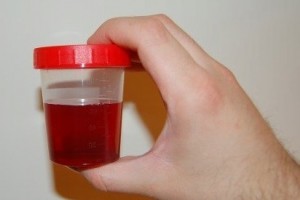
Principles of treatment
It is necessary to treat pain in the right kidney depending on the type of underlying disease, its stage and severity. It can be carried out using both conservative and surgical methods in a hospital, outpatient or home setting.
Conservative treatment is aimed at eliminating the inflammatory reaction, spasms, and eliminating infectious effects. Antispasmodics, anti-inflammatory steroids, antibiotics, and diuretics are prescribed as medications. For significant kidney damage, dialysis is performed.
The most important stage of complex treatment is a special diet aimed at prohibiting the consumption of a number of foods.
In some cases, pain is a symptom of a pathology requiring surgical intervention. Surgical intervention is performed in the following cases:
- significant injuries with tissue destruction;
- tumor formations;
- kidney stone disease;
- purulent pyelonephritis during exacerbation;
- generalized purulent abscess;
- thromboembolism;
- dimensional purulent cyst.
Right-sided renal pain, as a rule, indicates the likelihood of serious pathologies. If it persists for a long time, it is necessary to diagnose the disease and take effective therapeutic measures.
If the right kidney hurts, then this is an alarming signal indicating the development of a pathological process either in the kidney itself or in nearby organs. If we talk about the anatomical location, the right kidney is located slightly lower under the liver. An unpleasant symptom can appear in both men and women at any age.
If you have pain in your right kidney, this is a good reason to consult a specialist for a diagnostic test. Only after a comprehensive examination, diagnosis and finding out why the disease occurred can treatment begin.
Why does this unpleasant symptom occur?
The causes of pain in the right kidney can be very diverse:
- appendicitis. Probably everyone can show approximate location localization of the appendix, but few people know that the appendix can be located in twelve zones. Inflammation of the appendix can cause back or kidney pain;
- , which most often occurs in women. Pressure from the liver or insufficient strength of the right kidney can provoke prolapse;
- During pregnancy, pyelonephritis often occurs, this is due to the growth and characteristics of the venous system;
- urolithiasis disease. Statistics show that the disease most often affects the right kidney;
- tumors, cysts, abscesses;
- injuries.
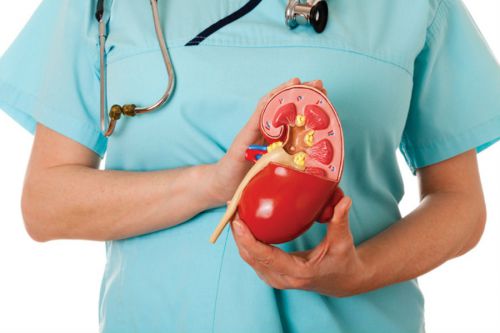
An experienced specialist can determine the cause of pain in the right kidney.
Clinical picture
Clinical symptoms characteristic of pain in the area of the right kidney differ from the manifestations of a bilateral process. Symptoms often depend on the triggering factor. Let's look at the general symptoms that are characteristic of pain in the area of the right kidney for various reasons:
- pain in the lower back on the right of a pulling nature, which can even radiate to the leg;
- colic, which radiates to the groin, and besides, all this is accompanied by increased urination;
- urine color and composition changes, in particular, blood appears;
- a characteristic increase in pain in a vertical position and a decrease in intensity in a horizontal position;
- when urinating, pain appears that radiates to the lower back;
- itchy skin.
Acute pain
Acute pain from the right kidney may indicate the presence of the following problems:
- urolithiasis disease. In essence, acute pain is colic, which is characterized by suddenness and paroxysmal pain;
- appendicitis;
- vertebrogenic diseases.
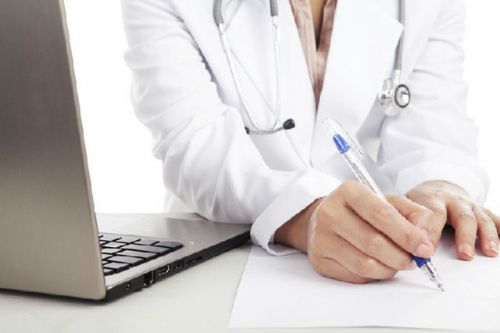
Symptoms of various diseases may be similar, so self-diagnosis is prohibited
Fighting methods
What to do when your right kidney is seriously ill? The first step is, of course, contacting a specialist. Treatment of the disease, first of all, must take into account the reasons that caused the development of the pathological process; it is very difficult to independently select treatment aimed at eliminating the provoking factor. The best thing you can do on your own is symptomatic treatment, but in the worst case it can seriously harm your health.
Treatment is carried out in two ways:
- conservative,
- operational.
Conservative treatment
This therapy includes the prescription of medications that have anti-inflammatory and analgesic properties. The modern pharmaceutical industry offers a wide selection of drugs for the kidneys, so thanks to them, you can easily do without surgery. These drugs can be antibiotics, diuretics, antispasmodics and much more. The choice of the optimal medication in each specific case falls on the shoulders of a specialist.
Conservative treatment is a whole complex of measures. Drug therapy should be combined with nutritional adjustments. Salted, pickled, smoked, fried, etc. should be excluded.
Surgical treatment
Surgery is performed in the presence of the following diseases:
- injury;
- neoplasms;
- acute urolithiasis, which is aggravated by blockage of the urinary duct;
- acute purulent pyelonephritis;
- abscess;
- large purulent cysts.
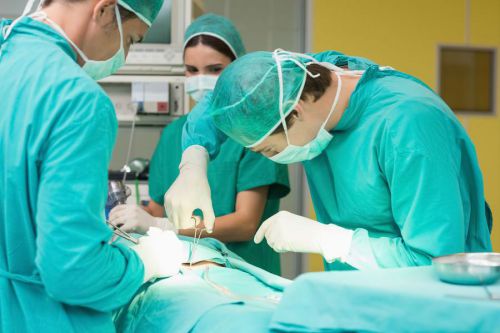
Surgery is a last resort
Prevention is the best cure
Healthy lifestyle and balanced proper nutrition- This is perhaps the best prevention of kidney disease. Still, in order to prevent kidney disease, you need to change your view of the pace and quality of life. Moderate physical activity, attention to your health, timely contact with a specialist, avoiding hypothermia - all this is the key to the health of your kidneys!
In addition, it is necessary not to forget about the basic rules of personal hygiene and daily toileting of the external genitalia. Do not forget also that uncontrolled use of certain medications can also cause pain from the right kidney, so do not select medications on your own.
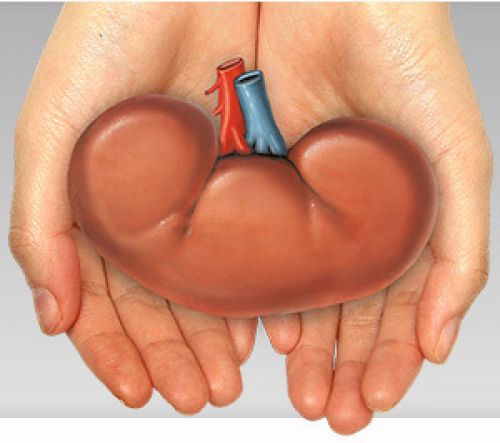
Kidney transplantation is an exceptional case when it comes to saving a person’s life
Features of treatment for pregnant women
It is important to understand that the internal organs of women during pregnancy work in an intensive mode. It especially affects the kidneys. This is why pregnant women are at risk.
In addition, the growing uterus can disrupt the normal flow of urine, and pregnancy itself can cause an exacerbation of existing chronic pathologies, for example, pyelonephritis or urolithiasis. Kidney diseases can negatively affect the development of the fetus, so it is important to treat them promptly.
If you experience the following clinical symptoms during pregnancy, you should urgently consult a specialist:
- painful urination;
- a feeling that the bladder is not completely emptied;
- protein in urine;
- arterial hypertension;
- severe swelling;
- pain in the abdomen, lower back;
- elevated temperature;
- nausea, vomiting.

Cranberry juice is good remedy which will help prevent diseases of the urinary system
In order to prevent the occurrence of the disease during pregnancy, it is important to adhere to the following recommendations:
- You should drink up to two liters of fluid per day;
- don’t be patient, it’s important to go to the toilet on time;
- Tight clothes, in particular tight underwear, should not be worn;
- underwear, which is intended specifically for pregnant women, must be made from natural fabrics;
- take a shower, not a bath.
The following factors influence the choice of treatment:
- gestational age;
- general state;
- underlying disease.
Although antibiotics are a last resort, in case of bacterial kidney damage you simply cannot do without antibacterial agents. Drugs are prescribed based on minimal risk of harm to the fetus.
![]()
Treatment of pregnant women is carried out with safe and reliable means
In all other cases, preference is given to phytocollections. But even in this case, it is important to coordinate your actions with your doctor, because the use of some medicinal plants can cause miscarriage or premature birth.
The following properties are used as herbal medicines:
- antibacterial;
- anti-inflammatory;
- diuretics.
So, pain in the right kidney can occur in any person, no one is immune from this. There can also be a lot of provoking causes, and even more treatment methods. That is why you should not waste your time searching for the optimal solution, but rather entrust your own health to professionals.
Pain in the right kidney is a signal indicating a developed pathological process, either in the renal system itself or in nearby organs. Anatomically, the right kidney differs from the left only in location; it is located slightly lower, under the liver.
Otherwise, the functions of both kidneys are identical. Parenchyma (kidney tissue) is not equipped with pain receptors, so pain symptoms are most often associated with changes in the structure, size of the pelvis or capsula fibrosa - fibrous renal capsule as a result of inflammation, compression or disturbances in urodynamics. If unilateral pain appears in the right kidney, this is a reason to consult a doctor, undergo a full comprehensive examination, find out the cause of the pain and begin treatment.
Causes of pain in the right kidney
Factors that provoke pain in the right kidney can be very diverse; the main causes of pain symptoms can be as follows:
The causes of pain in the right kidney should be determined by a specialist - a urologist, nephrologist, possibly an oncologist.
Symptoms of pain in the right kidney
The clinical manifestations of pain in the right kidney are somewhat different from the general symptoms of bilateral nephropathies and depend on the underlying cause, the provoking factor. Symptoms of pain in the right kidney may be as follows:
- Drawing pain in the lower back on the right.
- Right-sided renal colic, radiating to the groin, accompanied by increased urination.
- Hematuria (blood in the urine).
- Right-sided pain in the lumbar region when the body is in a vertical position, the pain subsides when the position is changed to horizontal.
- Right-sided abdominal pain radiating to the lower back.
- Pain in the right kidney, accompanied by fever, increased heart rate, and headache.
- Pain when urinating, accompanied by aching pain in the right side of the back.
- Pain in the right kidney, radiating to the leg.
- Itching of the skin.
- Changes in the color and composition of urine.
In general, symptoms of pain in the right kidney, as well as pain manifestations in both kidneys, in nephrological clinical practice are usually combined into three main groups:
- Urinary syndrome.
- Hypertensive syndrome.
- Nephrotic syndrome.
Pain in the right kidney area
A painful right-sided symptom in the kidney is most often not specific, that is, one that may indicate a specific disease. Most often, pain in the area of the right kidney needs clarification and a detailed, comprehensive diagnosis. In addition, determine the root cause of the disease and clarify clinical picture The collected anamnesis and specification of the nature of the pain helps. Pain in the area of the right kidney can be associated with vertebrogenic pathologies, intestinal infections, gallbladder disease or inflammation of appendicitis, gynecological or urogenital diseases, but most often the pain symptom is associated with renal pathologies. Among the reasons that cause pain in the area of the right kidney are the following:
- Stones located in the organ itself or the ureter manifest themselves as characteristic pain if obstruction (blockage) of the urinary tract and stretching of the fibrous renal capsule develop.
- Acute renal (renal) pain can be triggered by a bacterial infection during pyelonephritis in the acute stage or due to the development of a perinephric abscess.
- Blunt injuries of the kidney, most often of the closed type, are accompanied by the formation of a subcapsular hematoma and disruption of the structure of the parenchyma. Often, injury to an organ leads to haemoperitoneum - intra-abdominal bleeding and provokes intense diffuse pain in the area of the right kidney, the upper quadrant of the abdomen.
- Pain in the right kidney closer to the lower abdomen may be a signal of pathologies of the urinary system, for example, inflammation of the bladder.
- Diseases of the biliary system - the gallbladder, bile ducts, as well as liver pathologies, inflammation of the colon diverticulum, tumor processes in the abdominal cavity - these are possible diseases, the symptoms of which include pain in the area of the right kidney.
To differentiate the factors that provoke a pain symptom, it is necessary to specify the specific sensations of a sick person. Pain in the right kidney can be:
- Aching, chronic.
- Sharp, stabbing.
- Pulling, disappearing when changing body position.
- Paroxysmal.
Aching pain in the right kidney
Almost all inflammatory kidney diseases in the initial stage begin with subtle, chronic pain. Aching pain in the right kidney may indicate the development of the following diseases:
- Prolapse or nephroptosis of the right kidney is accompanied by nagging, aching pain in the right lumbar region. When changing body position, the pain subsides.
- Aching pain in the right kidney may indicate hydronephrosis, which most often begins asymptomatically. Aching right-sided pain often spreads to the entire lower back.
- Aching pain, which is localized in the upper back on the right, accompanied by low-grade fever and painful urination, may be a sign of developing right-sided pyelonephritis.
Dull pain in the right kidney
It is a sign of a chronic inflammatory process of infectious etiology, and it may also indicate the development of a kidney tumor. Benign and malignant tumors on early stages most often do not manifest themselves clinically; only periodic dull pain in the right kidney can indirectly indicate the development of a pathological process. It should be noted that this nature of pain is due to the fact that the kidney itself does not have pain receptors. The renal fibrous capsule, which is subjected to pressure, structural deformation, stretches and signals the onset of the disease. 3.
Acute pain in the right kidney
This is a more specific sign that may indicate problems such as:
- Urolithiasis, urolithiasis. Acute pain in the right kidney is colic, which develops suddenly and occurs in paroxysms. The pain can be localized both in the upper and lower abdomen, depending on where the stone is located. The pain symptom has a radiating, reflected character, that is, the pain radiates to the groin.
- The most serious complication is thromboembolism, which manifests as acute pain in the right kidney accompanied by hematuria (blood in the urine). Renal embolism is a dangerous condition that threatens not only the patient’s health, but also his life.
- Inflammation of the appendix is manifested by a typical picture of an “acute abdomen”, the clinical picture of which may include acute pain in the right kidney.
- Radiculopathy or vertebrogenic diseases can also manifest as pain radiating to the right kidney.
Nagging pain in the right kidney
It may have a variety of provoking factors, among which the most common are the following:
- Liver diseases. Since the liver is located above the right kidney, hepatopathologies place direct mechanical pressure on the kidney.
- A cyst of the right kidney, which in the initial stage develops asymptomatically, often over many years. The disease is characterized by a nagging pain in the right kidney, which clinically manifests itself in the anterior peritoneum, less often in the lower back.
- Stagnation of urine flow, in which the fibrous capsule of the kidney is stretched and a nagging, aching pain appears.
The nature of pain in the right kidney can be an important diagnostic sign that helps determine a plan for a comprehensive, detailed diagnosis.
How to recognize pain in the right kidney?
Diagnostic measures begin with an initial examination and medical history.
Diagnosis of pain in the right kidney is carried out on an outpatient basis if the pain symptoms are not acute. Attacks of renal colic, severe pain accompanied by temperature and change blood pressure, involves examination in a hospital, most often it begins after the acute condition has resolved.
Diagnosis of pain in the right kidney may include the following:
- Physical examination, inspection, palpation, percussion.
- Collection of anamnestic information.
- Laboratory examination of urine ( general analysis and bacterial culture).
- Blood test, both general (CBC) and biochemical.
- Ultrasound examination of the abdominal organs, including both kidneys.
- Urography of the kidney.
- X-ray of the spine.
- Angiography.
Treatment of pain in the right kidney
The therapeutic strategy is directly related to the underlying cause provoking the pain symptom. Treatment of pain in the right kidney can be carried out either conservatively or surgically.
Conservative treatment of pain in the right kidney is the prescription of medications that relieve the inflammatory process, and therefore the pain syndrome. These can be antispasmodics, steroids, antibiotics, anticoagulants, diuretics. If there is pathological damage to the kidney, dialysis may be used. In addition, an important component of the therapeutic complex is a special diet, which involves limiting the intake of certain foods. Most often, all salty, spicy foods, and smoked foods are excluded from the diet. Currently, the pharmaceutical industry produces a lot of highly effective drugs that help in the treatment of many kidney diseases. Therefore, surgical intervention is performed only in cases where the patient’s condition does not allow the use of conservative methods (emergency conditions)
Surgical treatment, including urgent, is carried out for the following diseases:
- Kidney injury (rupture, crushing).
- Benign adenoma, fibroma.
- Malignant tumors.
- Urolithiasis in the acute stage and blockage of the urinary duct.
- Purulent pyelonephritis in the acute stage.
- Extensive purulent abscess of the right kidney.
- Renal artery thrombosis (thromboembolism).
- Kidney cyst, purulent, large size.
In exceptional cases, when it comes to saving the patient’s life, a kidney transplant is indicated.
Prevention of pain in the right kidney
Primary preventive measures to help prevent pain in the right kidney are, first of all, adherence to a healthy lifestyle and the rules of a reasonable diet. The kidneys perform important filtration work, so their condition depends on the quality of nutrition. Physical activity, a reasonable attitude towards one’s own health, and avoiding hypothermia are measures that can prevent kidney disease. In addition, from early childhood it is necessary to teach children to observe basic rules of personal hygiene, this is especially true for girls due to the structural features of internal organs and the potential for motherhood in adulthood. It should be noted that some medications, when used uncontrolled, can also cause pain in the right or left kidney, so their prescription is the prerogative of a doctor, and not independent experiments with one’s health. Nephrotoxic drugs include:
- antibiotics of the penicillin group (semi-synthetic), tetracyclines, cephalosporins, sulfonamides.
- preparations containing aminocaproic acid, aminoglycosides.
- analgesics.
- non-steroidal anti-inflammatory drugs - ibuprofen and other drugs in this group.
- indomethacin in combination with paracetamol.
- cytostatics.
- radiopaque agents.
Secondary prevention of pain in the right kidney is measures aimed at eliminating the possibility of relapse of the disease. First of all, dispensary registration and systematic observation by the attending physician are necessary. In addition, for kidney diseases, adherence to diet No. 7 according to Pevzner is indicated, which significantly improves metabolic processes in the body, activates urination, helps control blood pressure, and restores normal water-electrolyte balance. The diet is prescribed both during the treatment process and after recovery in order to consolidate the therapeutic effect. Diet No. 7 is a menu with an extremely low protein content, a minimum amount of salt and fluid restriction. The meals include foods rich in vitamins and microelements; meals should be split meals, at least five times a day.
Prevention of pain in the right kidney also includes a preventive examination of the renal system in people with the following diseases:
- Diabetes mellitus type I, II.
- High blood pressure.
- Chronic diseases of infectious etiology.
- Autoimmune diseases.
- The use of long-term antibacterial therapy and nephrotoxic drugs.
- Age: women – over 50 years, men – over 55 years.
- Family, genetic predisposition to kidney disease.
- Symptoms of the disease
- Diseases with pain on the right side
- What to do if you have pain on the right side?
What to do if your right kidney hurts? The first and most important rule is that you should not self-medicate under any circumstances, this can lead to serious complications. There are a number of symptoms, if they occur, it is necessary to consult a doctor for examination and prescribing appropriate treatment.
The causes of pain on the right side of the kidney can be various diseases. It is important to immediately determine what caused these symptoms. Causes of pain on the right side:
As soon as symptoms appear in the right area, you must immediately contact a specialist at the hospital. It is recommended to visit a urologist, oncologist, nephrologist, and you may need to consult other doctors.
Symptoms of the disease
 Pain in the right kidney can be accompanied by various symptoms; the causes of the disease are numerous, but only a specialist can accurately determine the problem. These are not necessarily pathologies of the kidney itself; problems may be of a different nature. Common symptoms to watch out for include:
Pain in the right kidney can be accompanied by various symptoms; the causes of the disease are numerous, but only a specialist can accurately determine the problem. These are not necessarily pathologies of the kidney itself; problems may be of a different nature. Common symptoms to watch out for include:
- there is a nagging pain on the right side of the back;
- blood appears in the urine, that is, hematuria;
- colic occurs on the right side, it may be accompanied by increased urination;
- the pain on the right side subsides if you change your body position and lie down;
- headaches, fever, increased heart rate, and general condition are poor;
- pain occurs not only in the kidney, but also begins to radiate to the leg;
- there is sharp pain when urinating;
- the composition and color of urine changes, it becomes cloudy;
- the skin begins to itch.
The listed symptoms indicate the presence of nephrotic syndrome, urinary or hypertensive. Diseases of the intestines, spleen and other disorders may be diagnosed. Therefore, it is important not to delay the examination, but to consult a specialist. Usually you first need to visit a urologist, and if necessary, he will make appointments with other doctors.
Return to contents
Diseases with pain on the right side
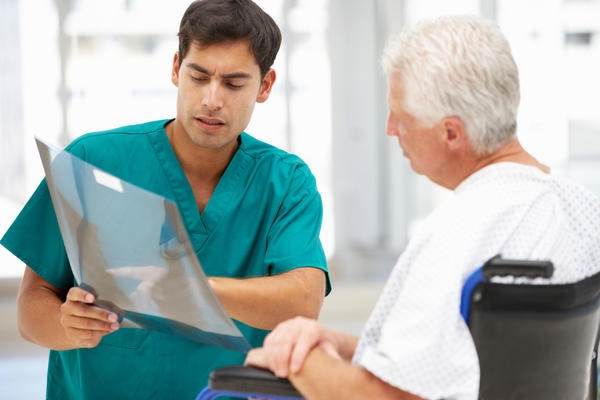 The right side may hurt as various diseases progress; it is for this reason that treatment cannot be started without examination. Pain on the right side is not necessarily associated with kidney disease. It could be a problem with the spleen or intestines. At home, it is impossible to determine for yourself whether it is colic or an attack of appendicitis. Only a competent examination will show what kind of disease is observed.
The right side may hurt as various diseases progress; it is for this reason that treatment cannot be started without examination. Pain on the right side is not necessarily associated with kidney disease. It could be a problem with the spleen or intestines. At home, it is impossible to determine for yourself whether it is colic or an attack of appendicitis. Only a competent examination will show what kind of disease is observed.
Pain on the right side can be caused by:
- inflammation of the renal pelvis (symptoms are not very pronounced, pain is tolerable);
- cancer;
- urolithiasis;
- prolapse of the kidney, i.e. nephroptosis;
- hydronephrosis of the right kidney;
- fibroma, adenoma and other benign tumors of the right kidney.
Most often, right-sided pain occurs during inflammatory processes. In addition to pain, frequent urination, back pain, and increased body temperature occur. But there are a number of problems that are not related to the kidneys. In this case, the following symptoms are observed:
- decreased amount of urine;
- pain in the lumbar region;
- skin itching;
- with frequent urges, the amount of urine is minimal;
- vision deteriorates;
- the urine is cloudy and may contain traces of blood.
In this case, you must urgently contact a urologist for an examination; you cannot delay or self-medicate.
Return to contents
What to do if you have pain on the right side?
 If pain appears in the right kidney, you should not begin to treat it yourself under any circumstances. It may happen that there is pain in the right kidney, but in fact the intestinal disease is progressing. As a result of self-medication, the body not only receives completely unnecessary drugs, but also triggers an already existing disease, causing a sharp deterioration.
If pain appears in the right kidney, you should not begin to treat it yourself under any circumstances. It may happen that there is pain in the right kidney, but in fact the intestinal disease is progressing. As a result of self-medication, the body not only receives completely unnecessary drugs, but also triggers an already existing disease, causing a sharp deterioration.
What to do if these symptoms occur? You should immediately consult a doctor, who will determine what kind of disease needs to be treated.. The complexity of such treatment is due to the fact that problems can be caused by diseases of other organs. Complex long-term treatment will be required.
For example, pain in the right kidney can be a consequence of the fact that there is a problem with the large intestine or pathology of the spleen. Inflammatory processes of the renal pelvis can cause mild pain in the right side. This is especially dangerous because mild pain may stop for a while, but this does not mean the disease has subsided. Over time, the pain on the right side will only intensify and may become unbearable.
During the diagnosis, it is necessary to follow a daily routine and diet; it is important to protect yourself from infectious and colds, as they can worsen the condition. You need to protect yourself from stress and hypothermia of your feet.
The diet must be strict.
Until treatment for a specific disease is prescribed, you should not drink a lot of water, so that an additional problem such as the formation of kidney stones does not arise. It is better to give preference to mineral water and include light vegetable broths in your diet. Fatty foods, fast food, smoked, spicy - all this should be excluded for a while, giving preference to cream, sour cream, fresh vegetables, fruits, eggs, fish, dietary meat in small quantities, black bread.
May 5, 2017 DoctorPain is always a signal of some kind of trouble in the body, so you should be attentive to your feelings. If a person feels pain on the right side in the area where the kidneys are located, there may be several reasons. It is possible that the right kidney hurts, but the source of pain may be located elsewhere. The best thing to do would be to see a doctor to find out exact reason and receive appropriate treatment.
Pain syndrome in the lumbar region on the right side is not specific, by which its cause can be immediately determined. It needs clarification and diagnostic procedures. This is important so that the treatment is adequate and brings positive results, and does not aggravate the situation. What could be causing pain on the right side?
- Renal pathology.
- Spine problems.
- Intestinal infections.
- Diseases of the liver and gall bladder.
- Inflammation of the appendix.
- Gynecological diseases.
- Pathologies of the urinary tract.
As you can see, there are many reasons for pain. Some organs are simply located in close proximity to the right kidney, which is why it hurts on the right side. For the initial determination of the cause, the gender of the patient is important. So, in women, the problem may be associated with various gynecological diseases or with such a dangerous phenomenon as an ectopic pregnancy. If it hurts in men, then prostatitis or prostate adenoma cannot be discounted.
The spread of pain may be due to the characteristics of the innervation and location of the nerve pathways. This applies primarily to problems arising in the spine. However, the most common cause of pain localized in the area of the right kidney is the pathology of this organ. In this case, the nature of the pain can be different.
Acute pain is the most specific sign, its nature and duration can help make a preliminary diagnosis. The presence of acute pain in the lumbar region may be due to the following reasons:
- renal colic during an attack of urolithiasis;
- renal embolism;
- inflammation of the appendix;
- radiculopathy.
The pain can be very severe, especially in the first three cases. This condition is called “acute abdomen”. It requires urgent help, because appendicitis and renal thromboembolism pose a threat to the patient’s life. With embolism, there is another symptom - hematuria, that is, there is blood in the urine. Although the same symptom may accompany an attack of urolithiasis. Because the symptoms are similar, testing is required to make an accurate diagnosis.
A dull aching pain in the area of the right kidney may indicate inflammation, prolapse of the kidney, as well as the development of hydronephrosis or a tumor process. Infections and inflammations of the kidneys almost always begin with mild pain in this area. A fairly common pathology of this kind is pyelonephritis.

Signs of right-sided pyelonephritis
- Localization of back pain is closer to the hypochondrium.
- Low-grade or elevated temperature.
- Painful urination.
Pyelonephritis can be chronic and worsen during pregnancy, when the load on the kidneys increases. This also manifests itself as pain in the back from the affected part of the organ.
A sign of hydronephrosis may be pain localized on the right, but gradually spreading to the entire lower back. With nephroptosis (prolapse of the kidneys), pain can occur only in moments of tension or be constant in an upright position, but often subside when changing body position. Tumor processes begin to manifest themselves intensively only at advanced stages, when the tumor is quite large in size. In most cases, there are no additional signs, only in case of malignant processes at the stage of metastasis formation.
How to understand that it is the kidney that hurts
It is possible to determine exactly why it hurts in a particular place only after a certain set of diagnostic procedures, however, based on some signs, it can be assumed that the cause of the pain syndrome was the right kidney.
- Localization of pain in the projection of the kidney.
- Increased pain upon palpation.
- Pain radiating to the groin and accompanied by increased urine output.
- Presence of blood in the urine.
- Pain subsides when taking a horizontal position.
- Pain in right side abdomen with radiation to the lower back.
- Pain that increases with urination.
- Blood pressure surges.
- Changes in urine.
- Skin itching.
The presence of at least one of these manifestations indicates a problem with the kidneys and that you need to contact a specialist.
Diagnostics
What to do if you have pain in your right kidney? You definitely need to go to the doctor. If it is acute, then this needs to be done urgently, however, even if the pain syndrome is not severe, you should not postpone a visit to the doctor. You will need a specialist urologist; if he is not available at the nearest medical institution, then a regular therapist will be able to collect anamnesis and prescribe the necessary diagnostic measures.
Diagnostic procedures
- Urine examination: general analysis, bacterial culture, special samples.
- Blood test: general and biochemical.
- Ultrasound of the kidneys and other abdominal organs.
- Angiography of the renal vessels.
- Kidney biopsy.
The main diagnostic methods are collecting anamnesis and examining the patient by a doctor, tests and ultrasound. If the data obtained is sufficient to determine the cause and make a diagnosis, then other studies are not required.
The results of urine and blood tests will show whether there is an inflammatory process in the body, how intense it is, and how well the kidneys cope with their functions. Ultrasonography allows you to assess the condition of internal organs. If during an ultrasound scan a serious renal pathology is detected that requires clarification, then the examination continues, the largest volume of which is necessary for tumor processes and suspicion of a malignant neoplasm.
In case of dull aching pain, all studies are carried out on an outpatient basis, the patient comes for procedures and visits the doctor as needed. If the pain is acute, accompanied high temperature and surges in blood pressure, the patient is admitted to a hospital and the examination is carried out there.
Treatment
The choice of treatment methods depends on the results obtained during the examination. Most often, conservative measures are used, but in some cases the patient can only be helped by surgical methods.
When treating kidney disease, the main method is drug therapy, but it is impossible to achieve success without following a diet. It provides for a certain drinking regime in accordance with the identified disease, restrictions and prohibitions in relation to the consumption of certain products. So, you can’t eat fried, canned, or spicy foods. You may need to limit the amount of fatty foods or protein you eat. In many cases, limiting the use of table salt is required. The amount of fluid consumed per day also depends on the diagnosis. In some cases it needs to be increased, in others it needs to be decreased.

If the right kidney is damaged and it is impossible to ensure natural filtration of blood, hemodialysis is prescribed. Surgical treatment is most often required for tumors or in severe cases of pyelonephritis, urolithiasis, and thromboembolism. Surgery may be necessary for kidney injuries that cause serious damage.
It is worth remembering that no pain in the human body arises for nothing, everything has its own reason. It needs to be found out, only then can you get the appropriate treatment. Therefore, do not delay going to the doctor and do not self-medicate.
How to cure kidneys at home?
SWELLING of the face and legs, PAIN in the lower back, CONSTANT weakness and fatigue, painful urination? If you have these symptoms, there is a 95% chance of kidney disease.
If you care about your health, then read the opinion of a urologist with 24 years of experience. In his article he talks about RENON DUO capsules. This is a fast-acting German remedy for kidney restoration, which has been used all over the world for many years. The uniqueness of the drug lies in:
- Eliminates the cause of pain and brings the kidneys to their original state.
- German capsules eliminate pain already during the first course of use and help to completely cure the disease.
- None side effects and there are no allergic reactions.



















